
Sony calls the $1299 Sony RX100 VII a camera with “Pro features” in a to-go package and targets a creative crowd of professionals and influencers willing to spend to streamline their ultramobile camera setup.
I spent some time with the RX100 VII, and in this review, we’ll go over its real-world capabilities and whether I would use it in my day to day creative activities such as media event coverage, food photos, and pro-travel.
Since it is ultra-compact, I’ll also quickly compare it with the best mobile camera phones to show you why ultra-compacts need to push the envelope ever-farther.
It’s important to understand that I use a compact camera like this one mostly in auto-mode (to save time), as I would with a smartphone. As such, I expect it to capture the highest image quality possible with relatively good accuracy because “what I see” is my baseline.
This is my specific use case, and some photographers will do the opposite and use it in manual mode much more often.
High-Level specs and optics
Just to have a good idea of what the Sony RX100 VII is capable of, let’s look at the key specifications:
- ZEISS 24–200 mm F2.8–4.5 lens
- 20 Megapixel 1.0-inch type sensor (0.52″ x 0.35″) 3:2 aspect ratio
- ISO100-12800
- 0.02 AF with 357 phase-detection points, 425 contrast-detection points, real-time eye-tracking
- 20 FPS shooting, without blackouts and with AF tracking
- 4K HDR recording
- 180-degree (up), 90-degree (down) flip touch screen
- 101.6 x 58.1 x 42.8 mm for 10.7 oz (302 g) with battery and memory card
- Official specs link
Design and handling
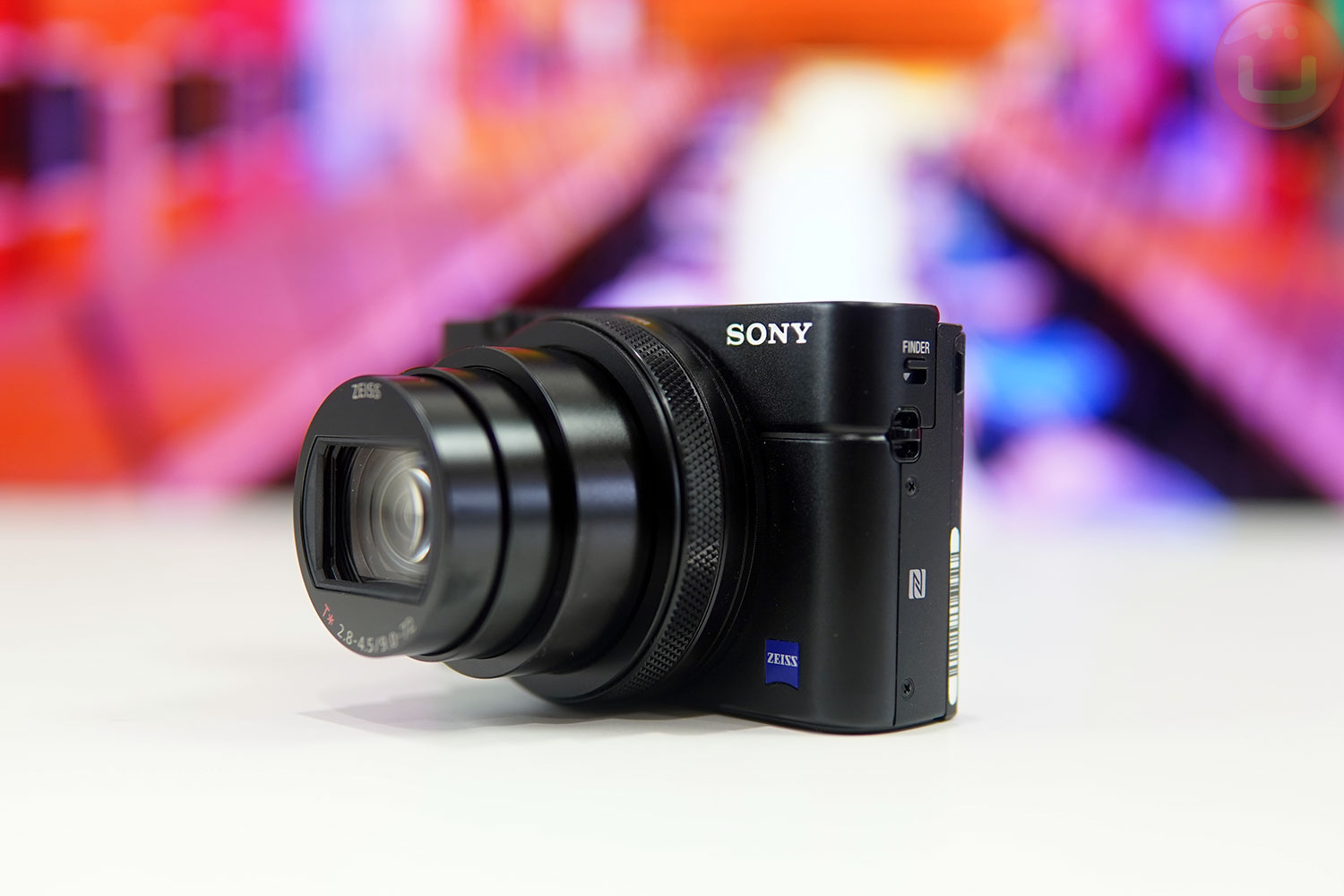
If the Sony RX100 VII looks very familiar, it is because it looks quasi-identical to the previous RX100 VI. It’s a great thing because this design remains the most compact in its category while remaining functional, but with a few things that could be improved upon.
When the lens is tucked in, the camera is incredibly compact. It fits a pants pocket (Levis 501 in my case) with a bit of room to spare. A vest/jacket pocket would be very comfortable, and in a bag or purse, you will forget it is even there.
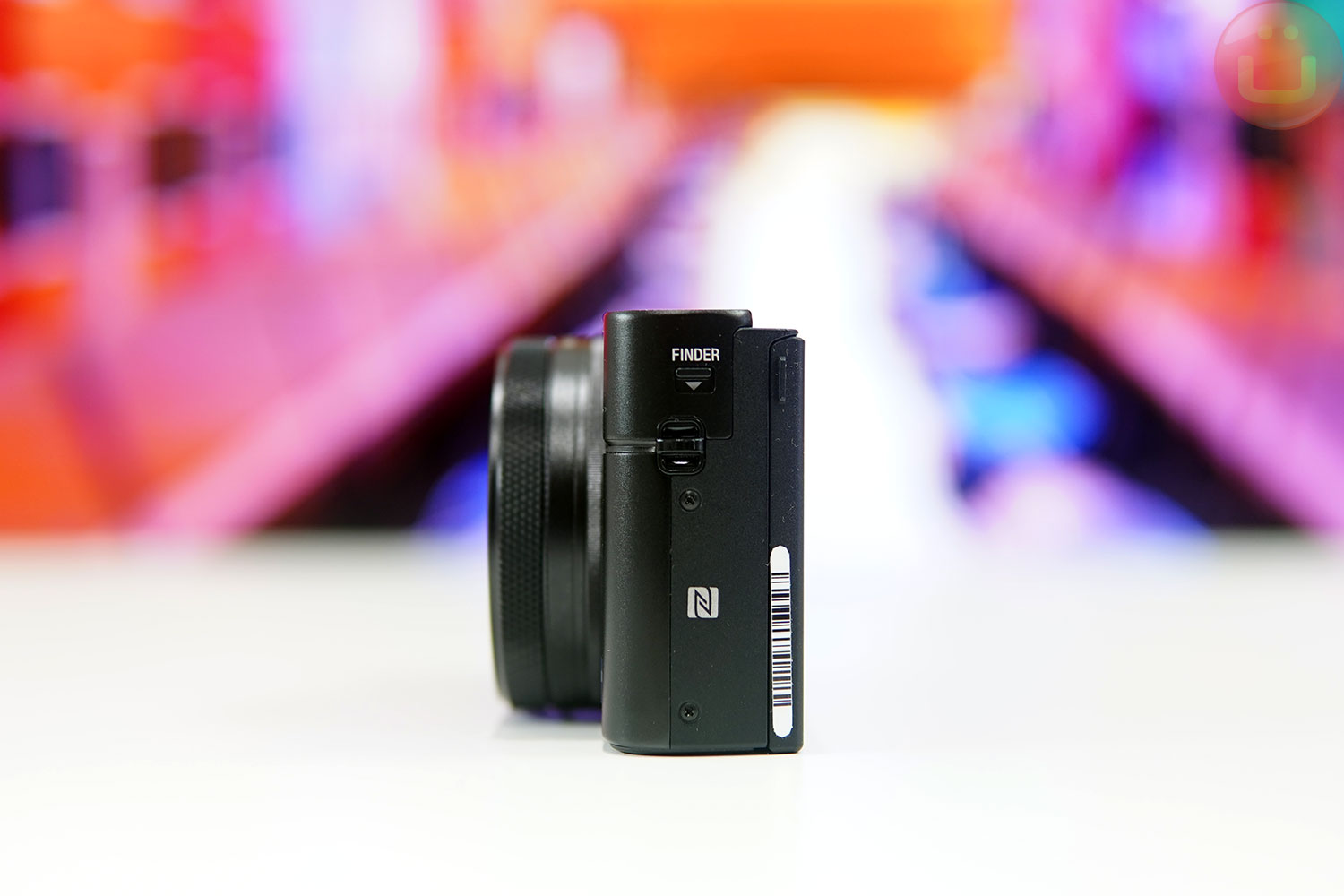
If you compare it with competitors in the same class and price range, this design is noticeably smaller, and I love the weight of 302g, which is about 1.5X that of a large phone. But there is a small price to pay: the lack of grip.
First, the smooth metal texture of the camera makes it a little slippery, so I recommend using the wrist strap or add some kind of textured surface or a custom grip accessory. Ideally, Sony could work the front metal surface to give it a little bit more texture and grip, as the ring has.
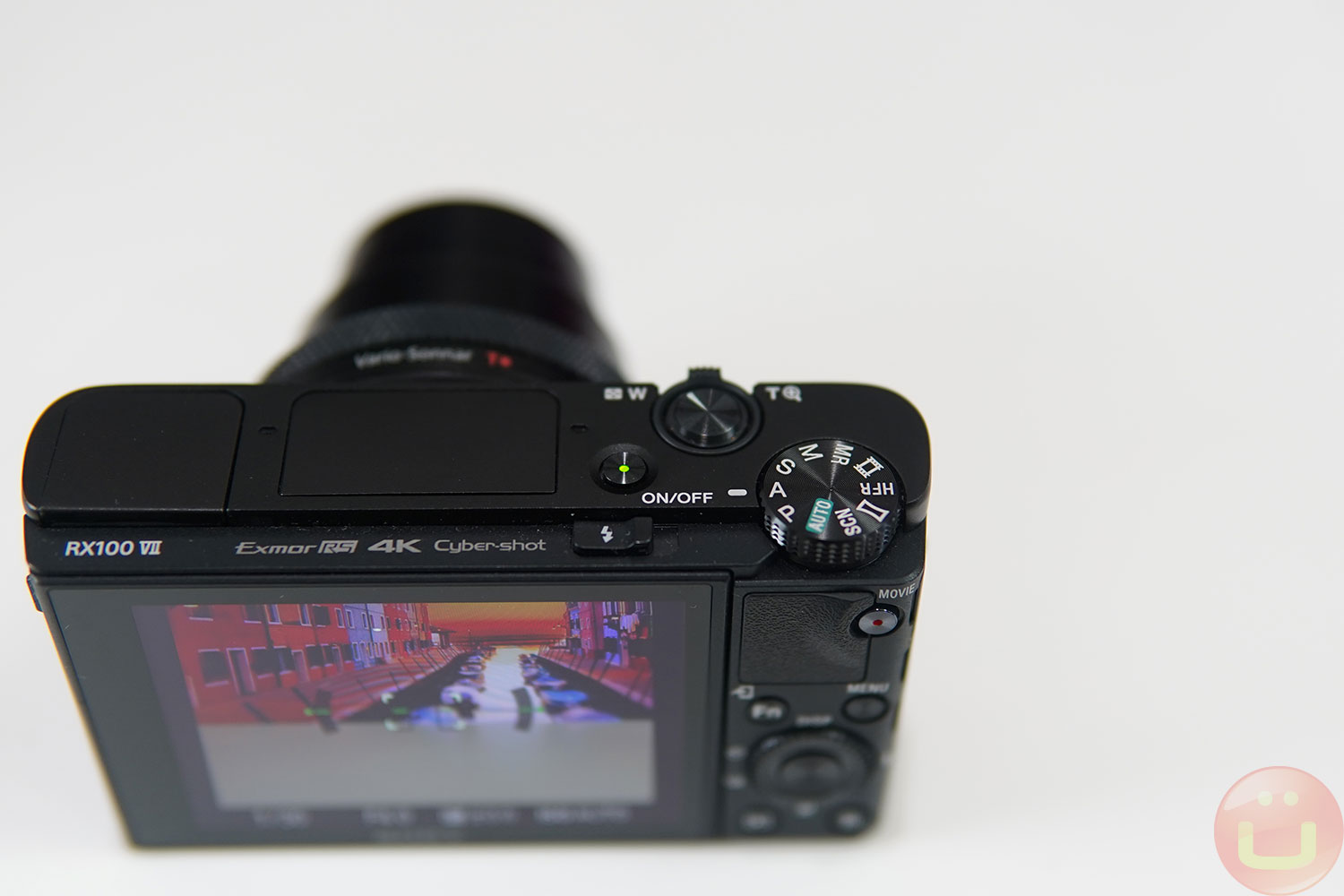
Secondly, the Power and Shutter buttons are flush to the surrounding surface, so they are sometimes a bit hard to find in low-light, especially the Power button. Because of their slightly larger sizes, competitors are often a bit more “tactile” with more physically defined buttons and knobs.
To the left, there is a hidden pop-up OLED viewfinder (2.36M pixels), which is very convenient in bright light situations where the LCD display may be overpowered by the environment’s light. Sony made it possible to turn ON the camera when the viewfinder pops-up, which is a nice touch.
To retract the viewfinder (VF), you have to press the lens first, then push the VF down. The pop-up part is faster, as you just need to pull the Finder tab/button to the left and the whole thing will pop-up and unfold.
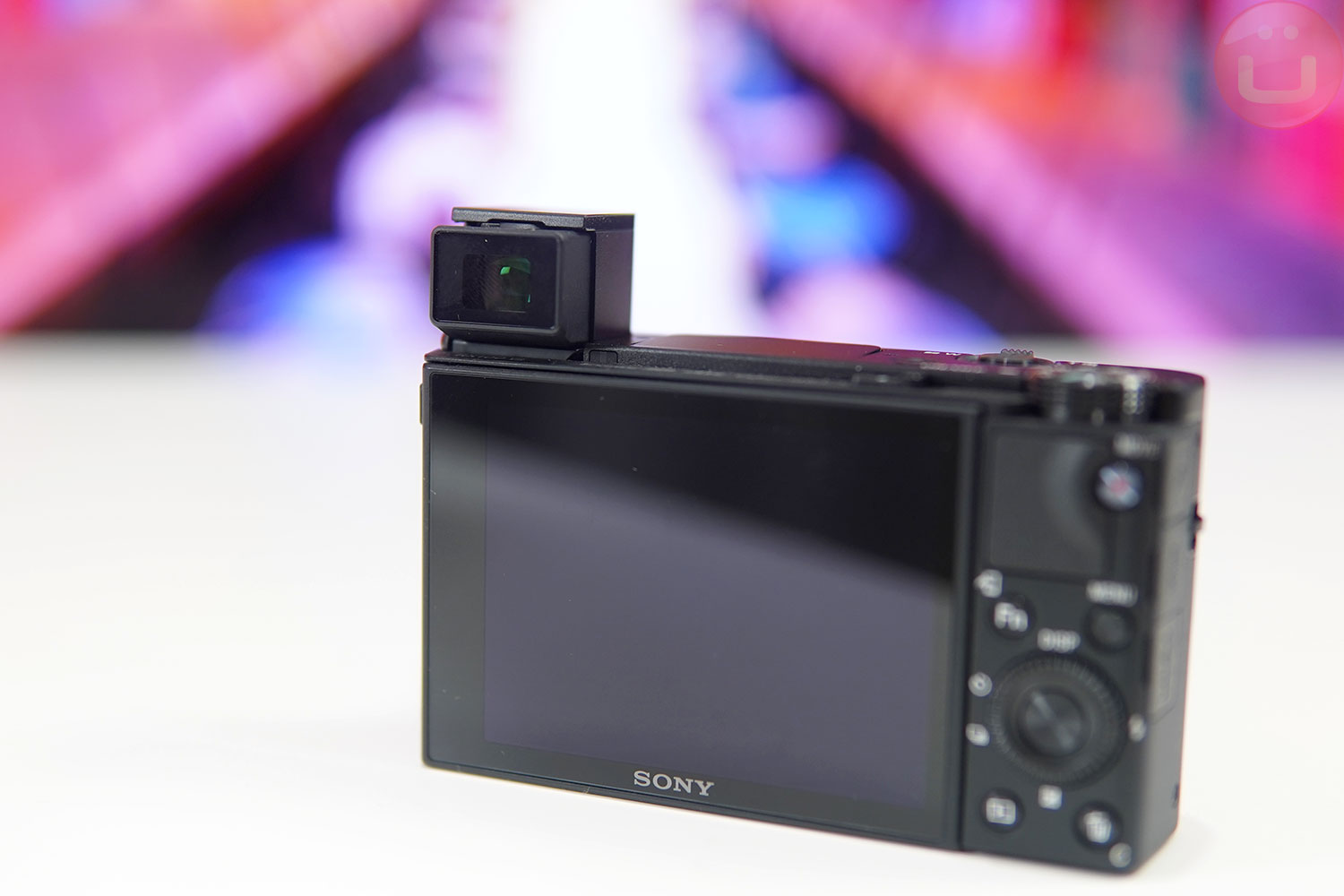
The lens has a ring that controls the zoom, which can also be controlled from the digital zoom controls near the shutter button. That ring has a smooth motion instead of the clicky controls that other cameras may have. I don’t mind, but it’s a matter of personal preferences.
The ring makes a lot of sense for photography, and of course, the digital zoom control is smoother when shooting videos.
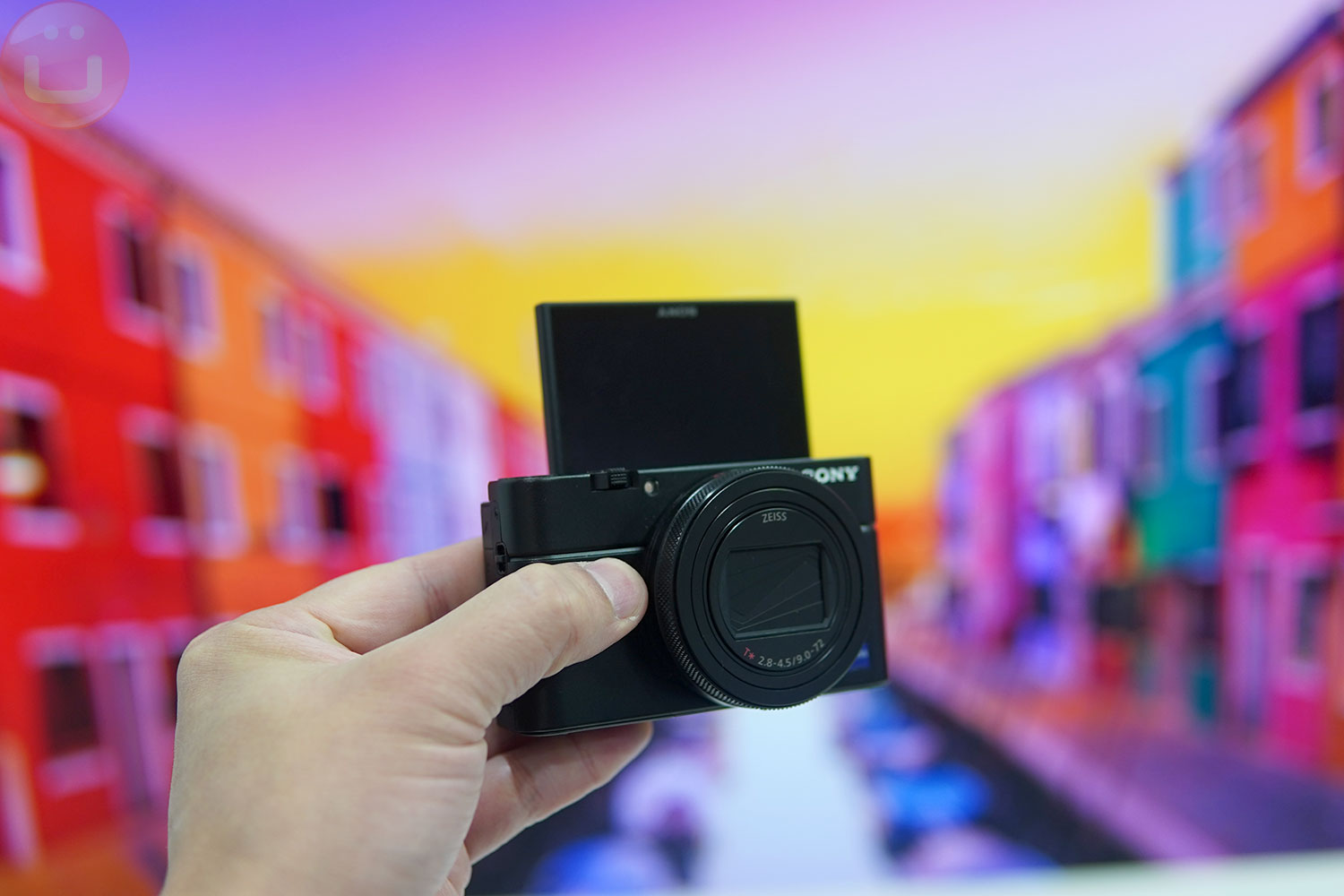
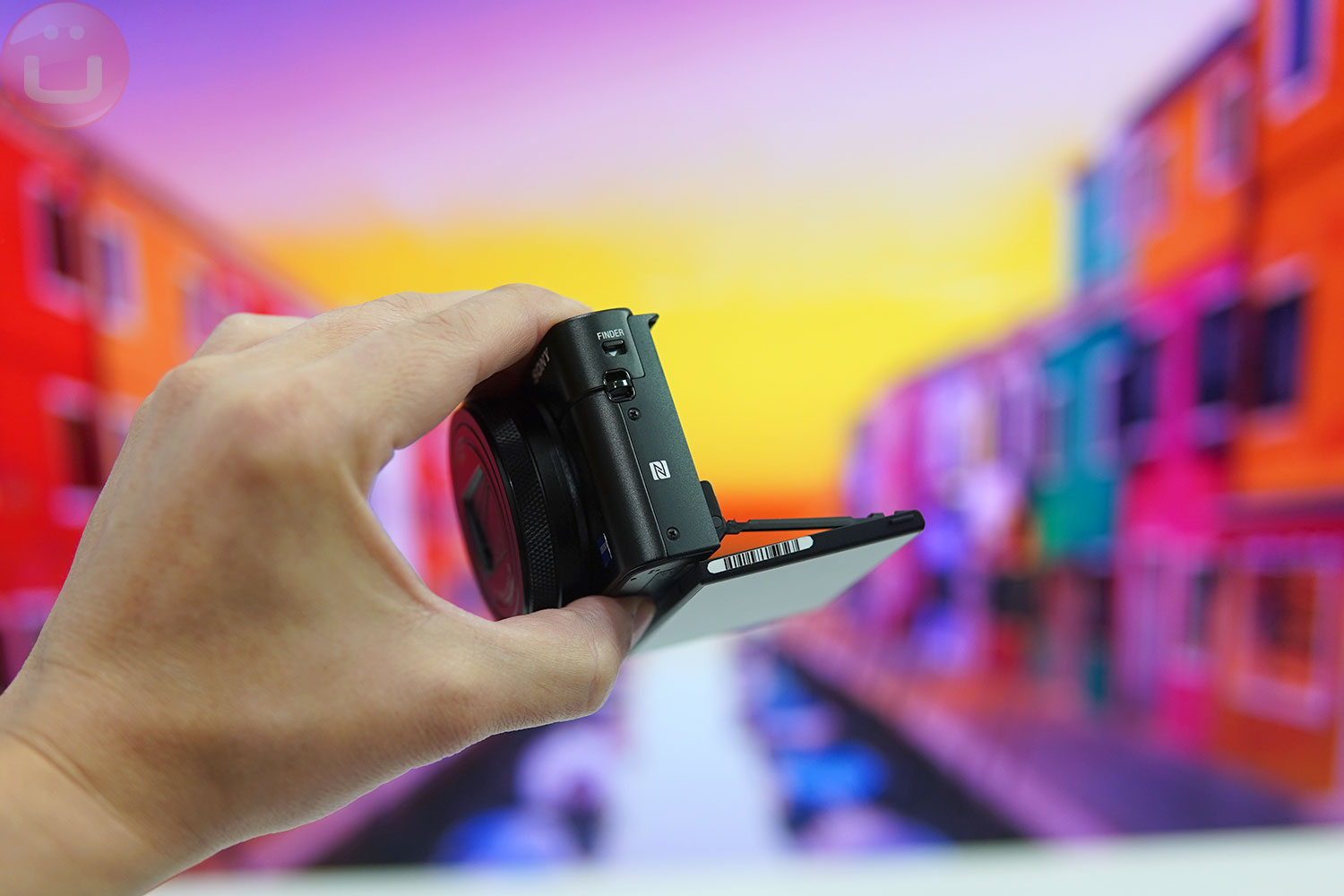
In the back, the display tilts to 180-degrees upwards for Vlogging and selfies. If you raise the camera up above your head, you can tilt the screen downwards a full 90-degrees. Sony’s hinge is superior to some competing compact cameras that can’t tilt that low.
On the right side of the camera, three ports are covered by plastic flaps: micro HDMI, micro USB, and a 3.5mm microphone input. The standard audio connector opens a lot of possibilities for sound recording improvements via external microphones. We’d love to see a USB-C port in the future as all our sync/charge gears have moved to that format.
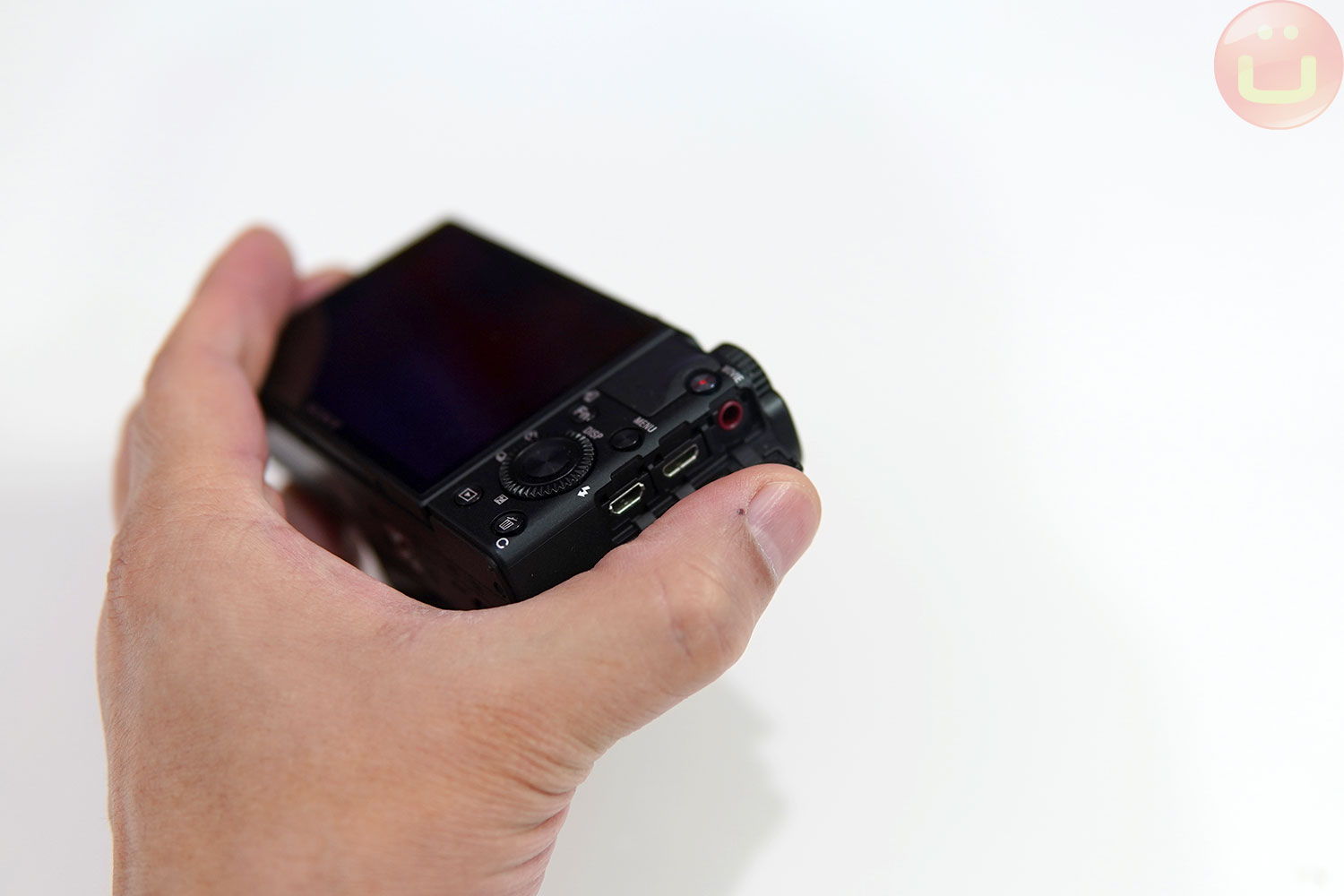
Without a doubt, the 3.5mm audio is one of the new things that Creative users were eagerly waiting for, and Sony caved in as competing products do provide it. The compact design makes it particularly hard to add stuff, but to if you target a Creative crowd, you must have excellent audio options. That’s probably the #1 complaint on Youtube videos.
There’s no microphone shoe, and depending on how you rig the microphone, the final rig size may actually be more substantial than with one of the competing cameras that has a microphone shoe.
If you don’t use an external microphone, you might be able to use the Sony RX100 VII on a gimbal stabilizer that was designed for phones. There are many situations to consider, depending on your situation.
Photo Quality
The photo quality of the Sony RX10 is excellent for its class, and for many vloggers and creatives, that justifies carrying it around as a “do it all” camera. Although many people compare the quality with something like an A6500 or above, I wouldn’t go that far, even with the default kit lens.

In full-auto, the RX100 VII captures natural-looking photos with great texture and like-like colors, in relatively difficult lighting situations.
The RX100 VII has the advantage of coming with a 24-200mm lens, which is much more flexible than many of the Sony NEX kit lenses that have a much more limited range. In that sense, I found it to be a more polyvalent camera than most mirrorless (out of the box).
At 24mm, the f/2.8 aperture is very reasonable and also allows for beautiful bokeh effects (out of focus blur). At 200mm the f/4.5 aperture is much smaller, and it’s quite common, but I rarely find myself using the telephoto in very low-light conditions, regardless of the camera.
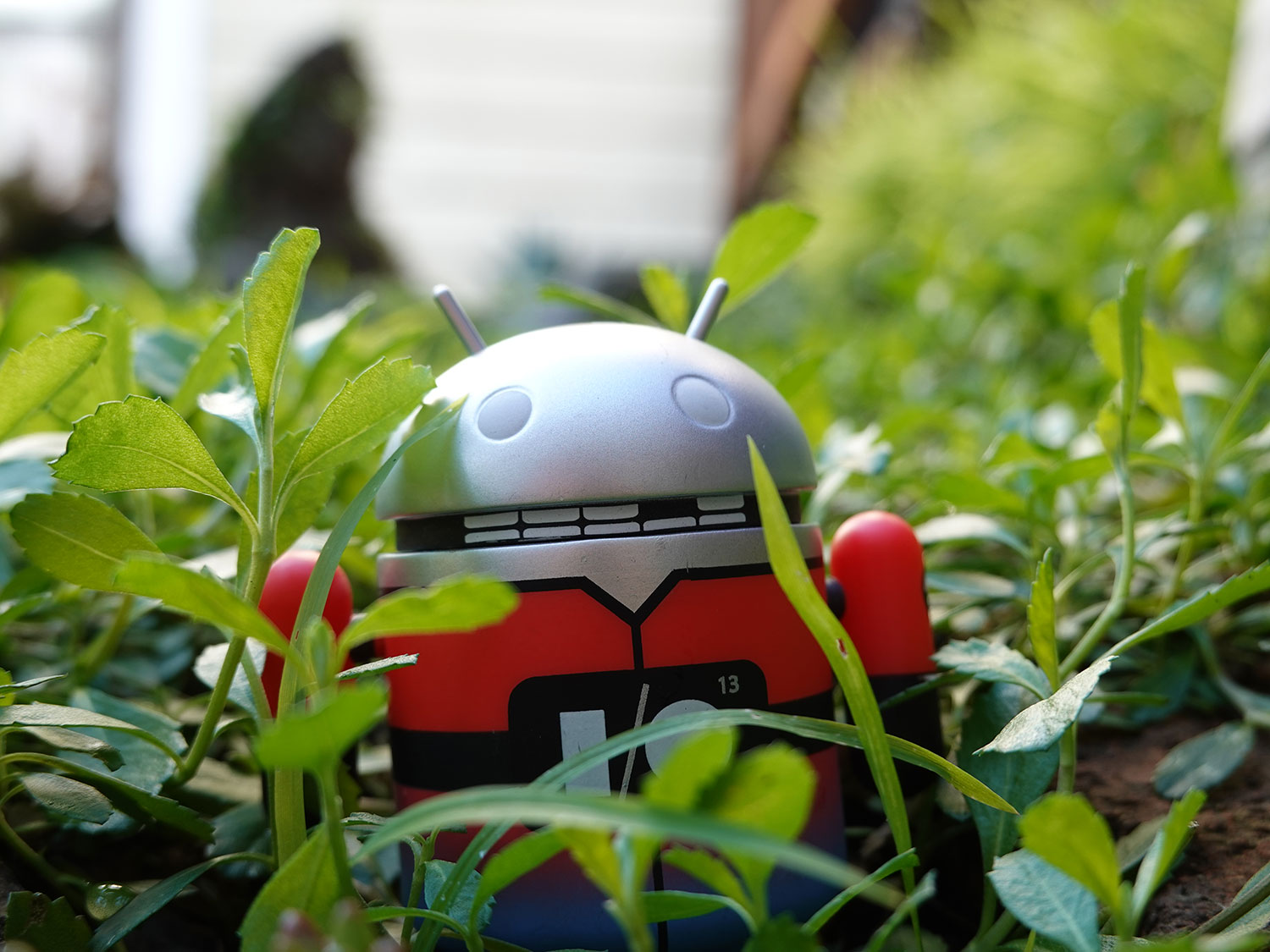
The analog blur of the RX100 is soft and artifact-free since it is caused by the lens and not by algorithms.
The autofocus (AF) is a highlight of the Sony RX100 VII, and it’s true that it reminds me of when we first covered the Sony A9 in 2017.
With 357 phase-detection points and 425 contrast-detection points, the AF can work in 0.02 seconds, according to Sony. And yes, it feels speedy. That’s not quite as much as the 693 AF points of the original Sony A9, but the RX100 VII AF performance is very satisfying.
The Face/eye tracking can be beneficial for subjects in motion (works on animals too), mainly since you can shoot at 20 frames per second (with tracking), without any blackouts.
There’s another option for bursts of 80 Shots in RAW+JPG at up to 90 FPS, but the time-frame is very short. I would probably use 20 FPS and have a few seconds’ of motion, but it’s nice to have the 90FPS option if you can time it correctly.
You can also set the AF point with the touch-screen of the Sony RX100, and that’s really the only practical use for the touch functionality. None of the menus or interface will work with touch at the moment.
I found myself using the touch AF quite often because the RX100 VII has a tendency to focus on things that are in the foreground, so I needed to pay attention to the on-screen focus hints. I had a few photos where the AF decided to focus elsewhere, something that didn’t happen with my Sony A7 III or any of the smartphones I had on me that day.
Video Quality (day / night)
When it comes to video, the RX100 VII has a lot to offer, including 4K video recording at 30 FPS, at a maximum of 100MB/s/
The overall video quality is outstanding and does well with high-contrast (HDR) scenes as well. I found the video to be a bit grainy in dim lighting, but I haven’t experimented with the many picture profiles that Sony has, and it can make a big difference depending on the scene.
There are new 480 and 960 FPS slow-motion, in addition to 240 FPS. You still have to prepare all the image settings before shooting and note that 480 and 960 FPS do require more light, and the image quality tends to suffer. 240 FPS works just as you expect, and it’s probably the most-used slow-mo mode. Hopefully, Sony will make slow-mo easier to use, with more automation.
Like previous Sony cameras, this one can get very hot when recording in 4K, and the default time out is ~5mn, but you can also make it temperature-dependent by enabling “Auto Power OFF Temp.” in the menu. This also gives you an option to cool it with a fan, if you are vlogging in your studio.
There’s an active image stabilization (digital) that helps when you are walking around. It is not as smooth as a GoPro 7 or some of the new smartphones, but it makes the video much more usable out of the box.
As I said before, the addition of a 3.5mm microphone connector will vastly increase the sound quality options, at the price of a clunky setup, perhaps.
RX100 VII vs. Best Smartphones: Galaxy Note 10 / iPhone 11 Pro and Huawei P30 Pro
It’s not news that the compact camera industry has been decimated by the rise of smartphone cameras. Mobile camera quality is the #1 purchase criteria, and it’s so important that we built our own Mobile Photo Quality benchmark (Camera IQ), along with a Camera Hardware Benchmark (Camera HW).
So, if you have some of the best mobile cameras out there, is it worth getting the Sony RX100 VII? Well, it depends.
In absolute terms, and even in full auto mode, the Sony RX100 VII produces higher-quality photos than the best phones, with more natural rendering without excess filtering and in higher resolution, whether it is in daylight or low-light.
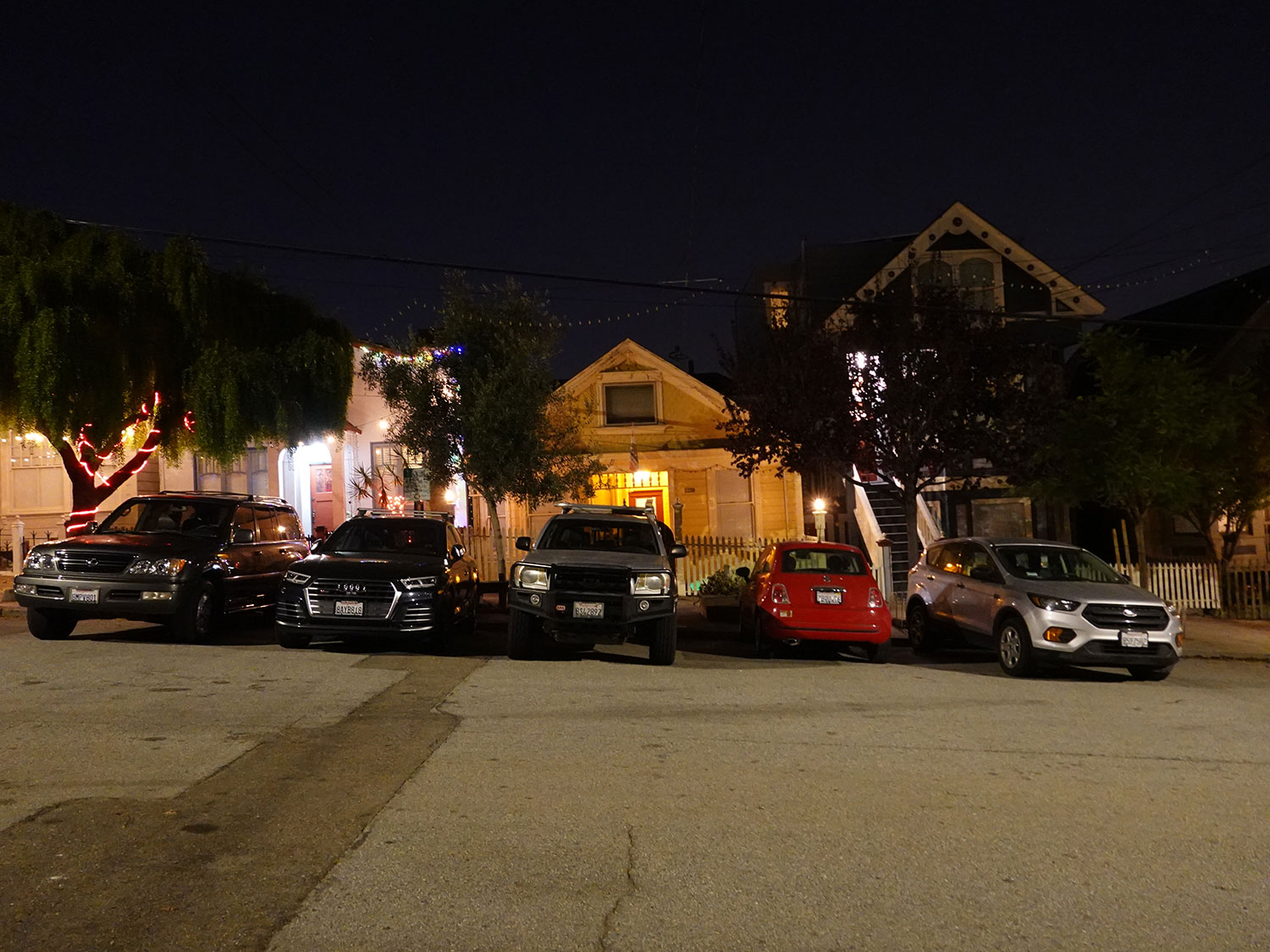
In low-light, the RX100 VII does brighten the scene a bit, but delivers more-natural images than phones.
A camera such as the RX100 VII will naturally capture much better bokeh than a smartphone because its lens is large enough to create real Bokeh. And of course, the bokeh is also present in videos, something that very few phones can do, and none can do as well.
Phone lenses are too small, so they fake the bokeh effect by computing the distance to the camera, but it is a bit hacky, and it is common to see artifacts on the edges or in hairs.
With the Sony RX100 VII, just focus on your shoot and set the aperture to maximum, and voila, it just works. This is an advantage that smartphones have not (yet) been able to work around, in my opinion.
The RX100 VII also captures life-like photos and videos, and you won’t have to deal with the extra filtering that phones often have, including making stuff supernaturally bright.
However, high-end smartphones are generally much better with HDR photos (high dynamic range) in tricky high-contrast situations. They just pack more computing power, and the software stack is much better when compared to the software in standalone cameras.
In my opinion, if you want better absolute quality, better bokeh, and a more natural-looking capture (less filtering), then the Sony RX100 VII can easily justify owning one. Quality gives you more options for what you can do later with your photos. That’s the reason why influencers and pros would consider getting one.
The 200mm telephoto is also far superior to any smartphone solutions now, even the P30 Pro, which has the most potent zoom of all. In many situations, I found the AF tracking to be superior as well, for movie recording, or action/sports photos.
If you just want to share on the web, or post on social media and don’t care that much about photo details and perhaps color accuracy, then you might the quality gap between the Sony RX100 and high-end smartphones is not large enough to justify the expense.
Conclusion

The Sony RX100 VII is the ultimate evolution of a successful line of product which has been praised by many creative users. Even with the rise in the quality of smartphone cameras, there are still many compelling reasons to get one of these, depending on your needs (and bank account).
I already have a Sony NEX 6000, 6400, and 6500, along with a Sony A7 III, and while I would happily replace one the mirrorless with the RX100 VII for a specific job and mainly for the light weight. However, I would keep using the interchangeable-lens cameras because I need larger apertures and the image quality is higher.
I didn’t spend much time talking about the menus and functions of the camera, but it is functionally a fully-featured camera and felt very much like using one of the mirrorless mentioned above most of the time. Sony users will be very comfortable with the interface.
Overall, I find this camera to be outstanding, and I wouldn’t be surprised if it was the best in its class, but I haven’t had enough playtime with the competition to make that final call.
Sony RX100 VII Camera: My Experience , original content from Ubergizmo. Read our Copyrights and terms of use.from Ubergizmo https://ift.tt/2R94F51













No comments:
Post a Comment